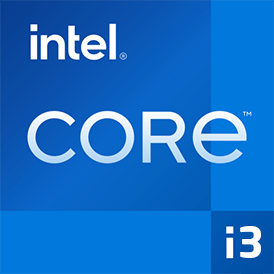
Compare Intel Core i3-7320 VS AMD A10-9700. Which processor delivers superior performance?
In this detailed comparison, we evaluate the specifications and benchmarks of both processors to determine the best choice for your needs. We analyze their core counts, maximum frequencies, and power consumption.
Intel Core i3-7320 boasts a maximum frequency of 4.10 GHz GHz. 2 cores that enhance multitasking capabilities.With a power consumption of 51 W W, it ensures efficient performance.Released in Q1/2017, it incorporates the latest technology for optimal efficiency.
AMD A10-9700 features a maximum frequency of 3.50 GHz GHz. 4 cores designed for high-performance tasks.Its power consumption is 65 W W, providing a balance of power and efficiency.Launched in Q3/2017, it is built to handle demanding applications.
 Reasons to consider
Reasons to consider Place in the overall ranking
(based on several benchmarks)
Higher clock speed
Around 15% better clock speed
Performance per watt
times less performance per watt
Common positions Intel Core i3-7320 CPU in popular benchmarks, for comparison with other models.
 Reasons to consider
Reasons to consider Place in the overall ranking
(based on several benchmarks)
More number of cores
About 2 times more cores
Common positions AMD A10-9700 CPU in popular benchmarks, for comparison with other models.
 Intel Core i3-7320
Intel Core i3-7320

Comprehensive background on the processors being compared, detailing their series, generation, and targeted market segment.
Essential parameters including the number of cores, threads, base and turbo frequencies, and cache size. These metrics provide insight into the processor’s speed—higher values generally indicate better performance.
The integrated graphics (iGPU) do not influence the CPU performance significantly; they serve as a substitute for a dedicated graphics card in the absence of one or are utilized in mobile devices.
This section details the built-in codecs used for encoding and decoding media content, which significantly enhance processing speed and efficiency.
Overview of the types and quantities of RAM supported by AMD A10-9700 and Intel Core i3-7320. The supported memory frequencies may vary depending on the motherboard configuration.
Analyze the TDP (Thermal Design Power) requirements of Intel Core i3-7320 and AMD A10-9700 to make an informed decision on the appropriate cooling system. Remember that TDP refers to thermal watts, not electrical watts.
Information on architecture, interfaces, and additional instructions supported by Intel Core i3-7320 and AMD A10-9700, including virtual machine technologies and fabrication processes.
By analyzing the results from various benchmarks, you can gain a clearer understanding of the performance differences between Intel Core i3-7320 and AMD A10-9700.
Compare the synthetic benchmark scores and make an informed decision on the best processor for your needs!